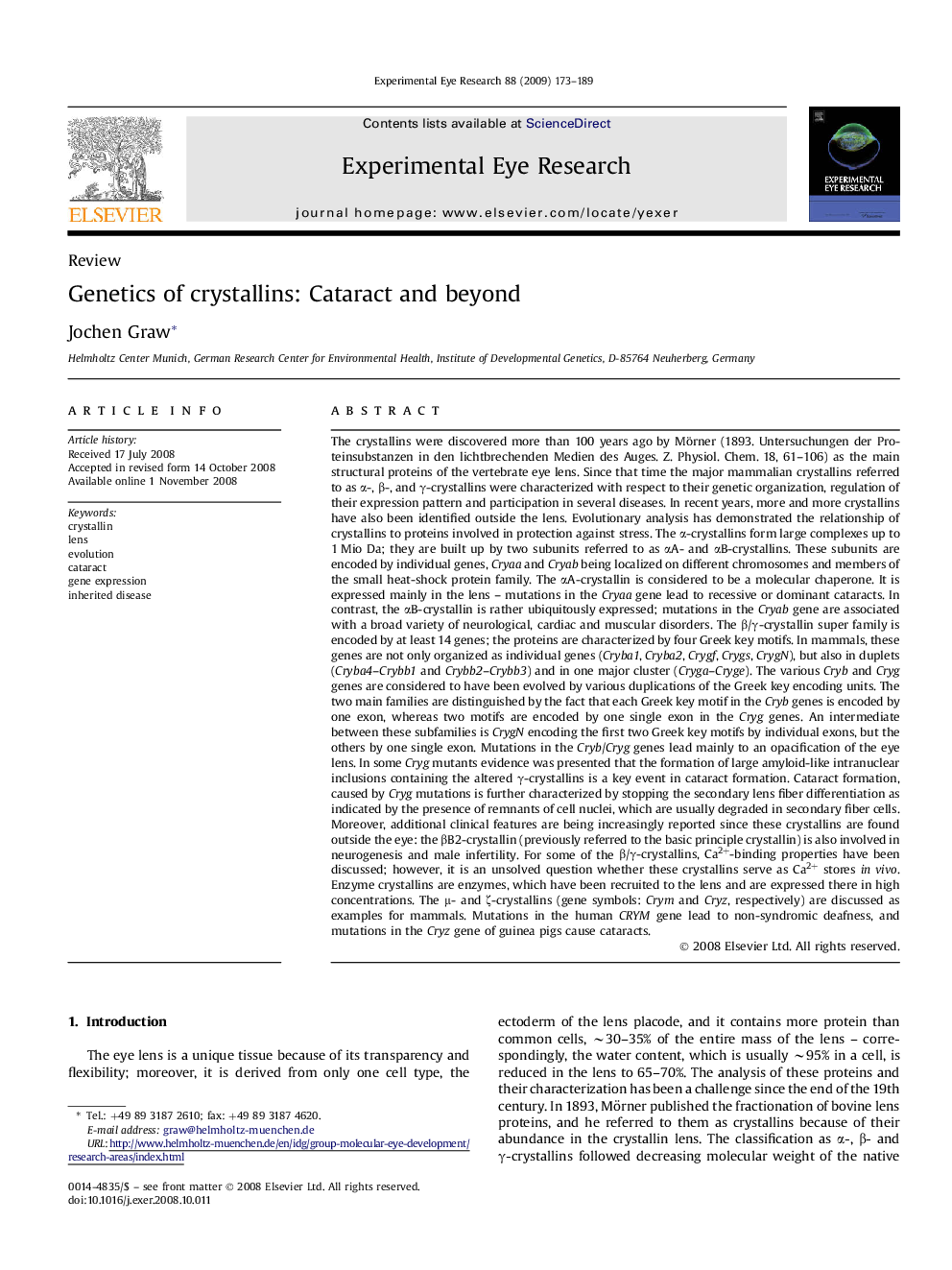| کد مقاله | کد نشریه | سال انتشار | مقاله انگلیسی | نسخه تمام متن |
|---|---|---|---|---|
| 4012105 | 1261179 | 2009 | 17 صفحه PDF | دانلود رایگان |

The crystallins were discovered more than 100 years ago by Mörner (1893. Untersuchungen der Proteinsubstanzen in den lichtbrechenden Medien des Auges. Z. Physiol. Chem. 18, 61–106) as the main structural proteins of the vertebrate eye lens. Since that time the major mammalian crystallins referred to as α-, β-, and γ-crystallins were characterized with respect to their genetic organization, regulation of their expression pattern and participation in several diseases. In recent years, more and more crystallins have also been identified outside the lens. Evolutionary analysis has demonstrated the relationship of crystallins to proteins involved in protection against stress. The α-crystallins form large complexes up to 1 Mio Da; they are built up by two subunits referred to as αA- and αB-crystallins. These subunits are encoded by individual genes, Cryaa and Cryab being localized on different chromosomes and members of the small heat-shock protein family. The αA-crystallin is considered to be a molecular chaperone. It is expressed mainly in the lens – mutations in the Cryaa gene lead to recessive or dominant cataracts. In contrast, the αB-crystallin is rather ubiquitously expressed; mutations in the Cryab gene are associated with a broad variety of neurological, cardiac and muscular disorders. The β/γ-crystallin super family is encoded by at least 14 genes; the proteins are characterized by four Greek key motifs. In mammals, these genes are not only organized as individual genes (Cryba1, Cryba2, Crygf, Crygs, CrygN), but also in duplets (Cryba4–Crybb1 and Crybb2–Crybb3) and in one major cluster (Cryga–Cryge). The various Cryb and Cryg genes are considered to have been evolved by various duplications of the Greek key encoding units. The two main families are distinguished by the fact that each Greek key motif in the Cryb genes is encoded by one exon, whereas two motifs are encoded by one single exon in the Cryg genes. An intermediate between these subfamilies is CrygN encoding the first two Greek key motifs by individual exons, but the others by one single exon. Mutations in the Cryb/Cryg genes lead mainly to an opacification of the eye lens. In some Cryg mutants evidence was presented that the formation of large amyloid-like intranuclear inclusions containing the altered γ-crystallins is a key event in cataract formation. Cataract formation, caused by Cryg mutations is further characterized by stopping the secondary lens fiber differentiation as indicated by the presence of remnants of cell nuclei, which are usually degraded in secondary fiber cells. Moreover, additional clinical features are being increasingly reported since these crystallins are found outside the eye: the βB2-crystallin (previously referred to the basic principle crystallin) is also involved in neurogenesis and male infertility. For some of the β/γ-crystallins, Ca2+-binding properties have been discussed; however, it is an unsolved question whether these crystallins serve as Ca2+ stores in vivo. Enzyme crystallins are enzymes, which have been recruited to the lens and are expressed there in high concentrations. The μ- and ζ-crystallins (gene symbols: Crym and Cryz, respectively) are discussed as examples for mammals. Mutations in the human CRYM gene lead to non-syndromic deafness, and mutations in the Cryz gene of guinea pigs cause cataracts.
Journal: Experimental Eye Research - Volume 88, Issue 2, 2 February 2009, Pages 173–189